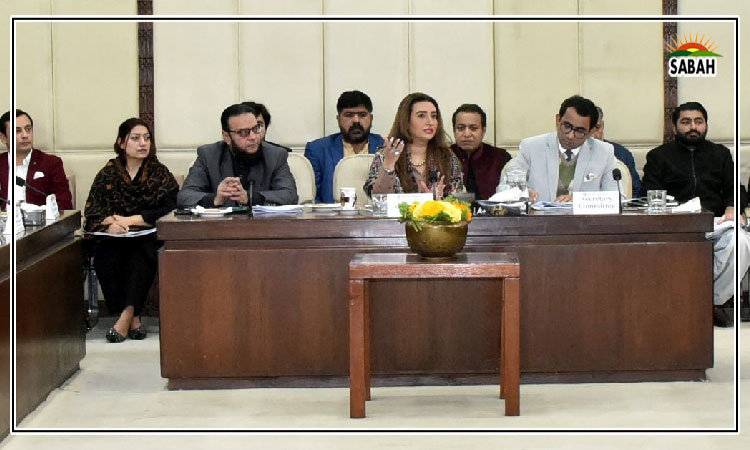Death and garments…Rafia Zakaria
THIS past Monday marked the 10th anniversary of the Rana Plaza collapse. Rana Plaza was an eight-storey building that housed five different garment factories in Dhaka. On the morning of April 24, 2013, the building collapsed killing 1,134 workers. Around 2,500 people were injured as a structural fault in the construction of the building trapped them beneath the rubble. The anniversary was marked by vigils and commemorations, especially among the workers who were fortunate enough to have survived the catastrophe. Several protests were also held in Bangladesh where the safety conditions faced by those who work in garment factories still leave a lot to be desired.
Here in Pakistan, in 2012, a fire broke out in a garment factory in Karachis Baldia Town, killing over 260 workers in a tragedy that has been termed as the countrys worst industrial disaster.
More recently (around two weeks back) four firefighters were killed in a bedsheet factory that collapsed after a massive fire broke out, possibly caused by an electric short circuit. According to observers, the fire raged for several hours. It spread as there were no fire extinguishers; moreover, the goods that had been stored exceeded their capacity, perhaps contributing to the collapse. The manufacturing unit itself was located in a congested area, making it difficult for the firefighters to douse the flames.
It is worth noting that the fire erupted not long after close to 50 brands and retailers signed the Pakistan Accord that aims to protect labourers in the textile industry. This accord, which includes signatories such as H&M, Zara, Mango, Marks & Spencer and Primark, is modelled along the lines of a similar agreement for Bangladesh that was signed soon after the Rana Plaza tragedy.
The Pakistan Accord asks brands to undertake inspections of the manufacturing premises to ensure that safety standards are being maintained. It asks for remediation measures and independent committees to monitor worker safety awareness programmes. It also asks for an independent complaints procedure and various local capacity-building measures to allow workers and communities to address problems before a tragedy occurs. The agreement is between the international garment workers unions UNI Global and IndustriALL, and various brands. Unfortunately, the months since this agreement was signed do not seem to have produced much progress or change in the way safety is managed at garment factories.
The lack of oversight implicates both local and global actors. On the global front, fashion brands are always trying to cut corners, not least because the extremely high inflation in Western markets means that those who can offer the lowest price to the sticker-shocked customers automatically have an edge in the competition. Such is their depravity that a survey that was released some months ago found that fashion brands are often uninterested in implementing safety measures that decrease their profit.
When some errant fashion brands were contacted following the results of the survey, they issued statements about how seriously they were taking the issue. At the same time, change has been less than forthcoming. Since last year, many retailers have taken advantage of the economic crises facing South Asia by driving production costs down even more.
Meanwhile, last summer, hundreds of workers at a clothing factory in Faisalabad were all left without pay for months. The factory made hundreds of thousands of clothes for a fashion brand named Missguided, which found itself caught in a dire financial crisis, owing 17m to its suppliers. When the owner of the factory was contacted about the desperate situation of the workers, he blamed the fashion brand for keeping him in the dark. Apparently, Missguided owed 2 million to the factory. Unless that money came through, there was no way the workers could be paid. Another factory located in Sialkot which also made clothes for the same brand also owed money to its workers who laboured for months on end in the hope that they would finally be paid.
The female garment workers in Bangladesh were (at least until the Covid-19 pandemic) touted as a success story. The women that worked in these factories were seen as agents of cultural transformation as they became earners, which gave them a lot more power in the family structure. Some of these gains are being lost as the world economy slows down. Another dangerous factor is the looming threat of climate change. According to a mapping of Bangladeshs garment-producing areas, the failure of the industry to become sustainable will mean that a large chunk of the garment-producing areas will be flooded and under water by 2030.
In the meantime, the survivors of the Rana Plaza collapse 10 years ago are still suffering. More than two-thirds of them are unemployed. Others have to bear the physical and mental trauma caused by injuries sustained and the post-traumatic stress disorder of watching so many people die. Their families have also faced negative consequences of losing the wages which had been so instrumental in raising their standard of living.
The slowing down of the world economy post-Covid-19 is the worst thing that could have happened to the garment industry. With the demand for clothes now flagging owing to the global economic recession as well as efforts to lower consumption to halt the effects of climate change those with the least power suffer the most. In this tale of abuse and exploitation, the loser is the garment worker whose choices are reduced it boils down to either working in unsafe conditions or not working at all. Despite the fact that the Rana Plaza tragedy exposed just how horrific the consequences of ignored safety measures can be, garment workers can only keep their mouths shut and spend hour after hour making clothes for the rich people living far away, and who care little for economic and social rights of workers living in a far grimmer world.
Courtesy Dawn












